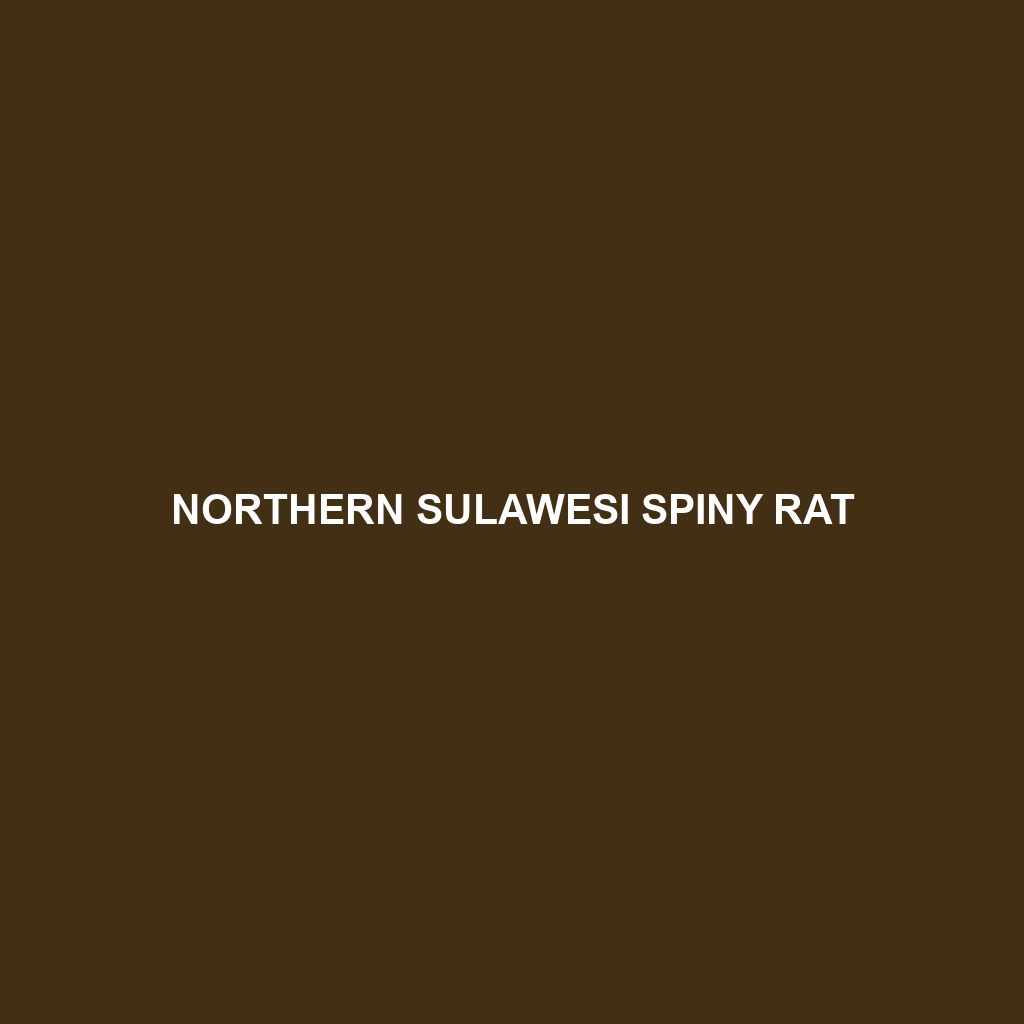Common Name: Northern Sulawesi Spiny Rat
Scientific Name: Maxomys hellwaldii
Habitat:
The Northern Sulawesi Spiny Rat is primarily found in the rich and diverse tropical rainforests of northern Sulawesi, Indonesia. This species thrives in elevations ranging from lowland forests to montane regions. Its habitat is characterized by dense vegetation, including shrubs and undergrowth, typically near streams and rivers where moisture levels are high. The distinct ecological zones of northern Sulawesi offer a variety of niches that are crucial for the survival of this rodent.
Physical Characteristics:
The Northern Sulawesi Spiny Rat is a medium-sized rodent, measuring approximately 30 to 40 centimeters in length, excluding the tail, which adds an additional 25 centimeters. Its fur is coarse and spiny, featuring a mixture of brown and grey shades that provide excellent camouflage against the forest floor. One notable characteristic is its elongated body, a pointed snout, and large ears, which contribute to its acute sense of hearing. The species also exhibits prominent whiskers and strong hind legs that aid in navigating its forested environment.
Behavior:
This species is predominantly nocturnal, displaying activity during the night to avoid predation. Northern Sulawesi Spiny Rats are known to be excellent climbers, often foraging for food among the low branches and shrubs. Their social behavior includes living in small groups or pairs, where they communicate through a range of vocalizations. They also exhibit territorial behaviors, marking their area with scent glands. Despite their spiny fur, they have a playful demeanor, often engaging in social interactions when foraging.
Diet:
The Northern Sulawesi Spiny Rat is an omnivorous creature, feeding primarily on fruits, seeds, and nuts found in its rainforest habitat. Additionally, it may consume insects and other small invertebrates when plant food is scarce. Their diet is crucial for seed dispersal, contributing to the growth of various plant species in their ecosystem. This adaptability in feeding habits helps them thrive in diverse environmental conditions.
Reproduction:
Reproductive habits of the Northern Sulawesi Spiny Rat include a breeding season that typically peaks during the rainy season, which ensures a higher survival rate for the offspring. Female spiny rats give birth to litters of 2 to 4 young after a gestation period of approximately 30 days. Maternal care is high; mothers are known to groom and protect their young vigilantly. Youngsters are weaned after about 5 weeks and reach sexual maturity by 3 to 4 months of age.
Conservation Status:
The Northern Sulawesi Spiny Rat is currently classified as endangered due to habitat loss driven by deforestation and agricultural expansion. The species is also threatened by hunting and the degradation of its natural habitat. Conservation efforts are actively in place to protect this unique rodent and its environment.
Interesting Facts:
One fascinating aspect of the Northern Sulawesi Spiny Rat is its ability to adapt its diet based on seasonal availability, showcasing its resilience among changing environmental conditions. Additionally, this species has been noted for its unique behavioral traits, such as using its spiny fur to defend itself against predators, making it one of the more interesting rodents of the Sulawesi ecosystem.
Role in Ecosystem:
The Northern Sulawesi Spiny Rat plays a vital role in its ecosystem as a seed disperser, aiding in the growth and regeneration of rainforest plant species. By foraging for fruits and seeds, it contributes to the biodiversity and sustainability of the forest. Moreover, it serves as a prey species for larger predators, thereby maintaining the balance of the food web within its habitat.
